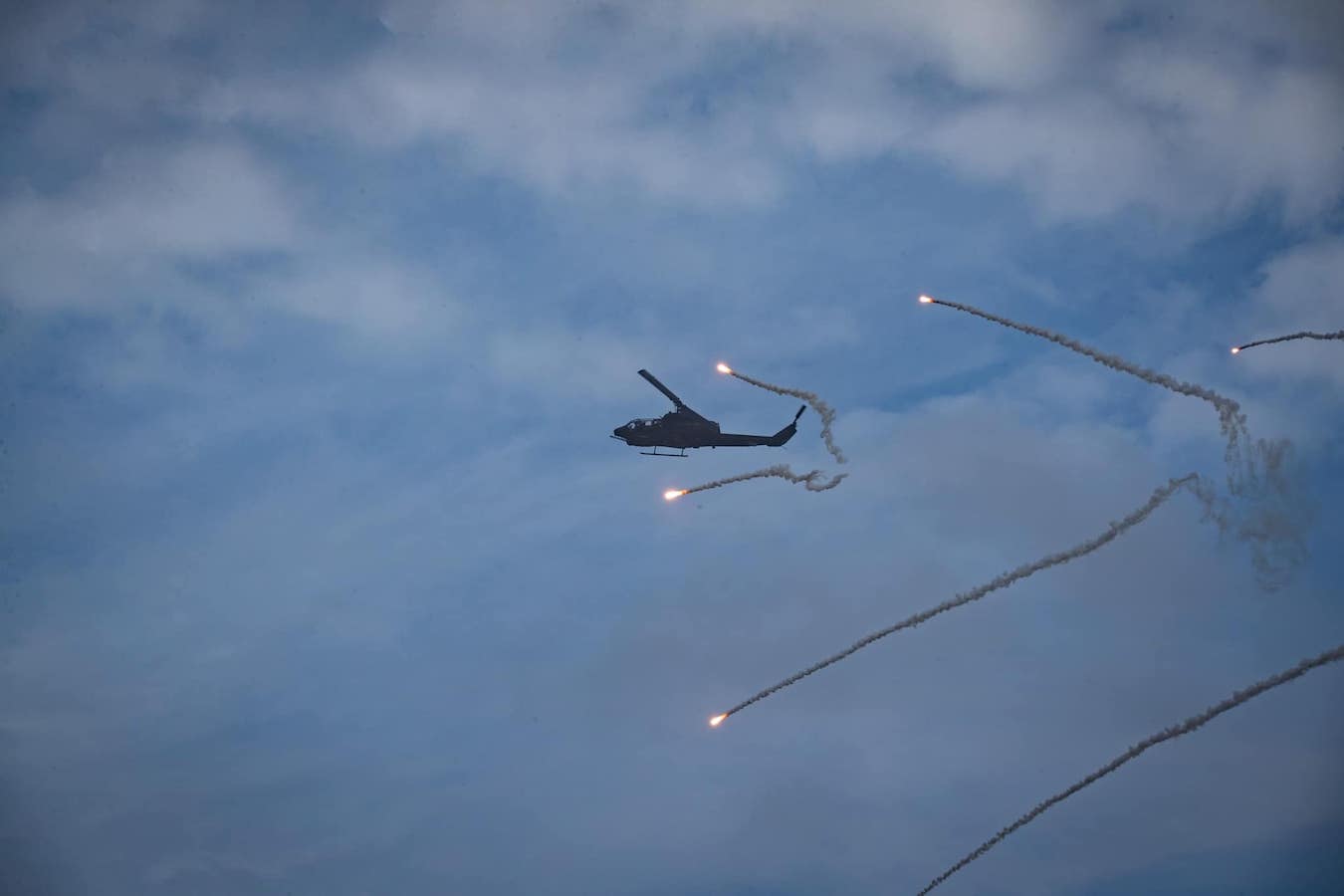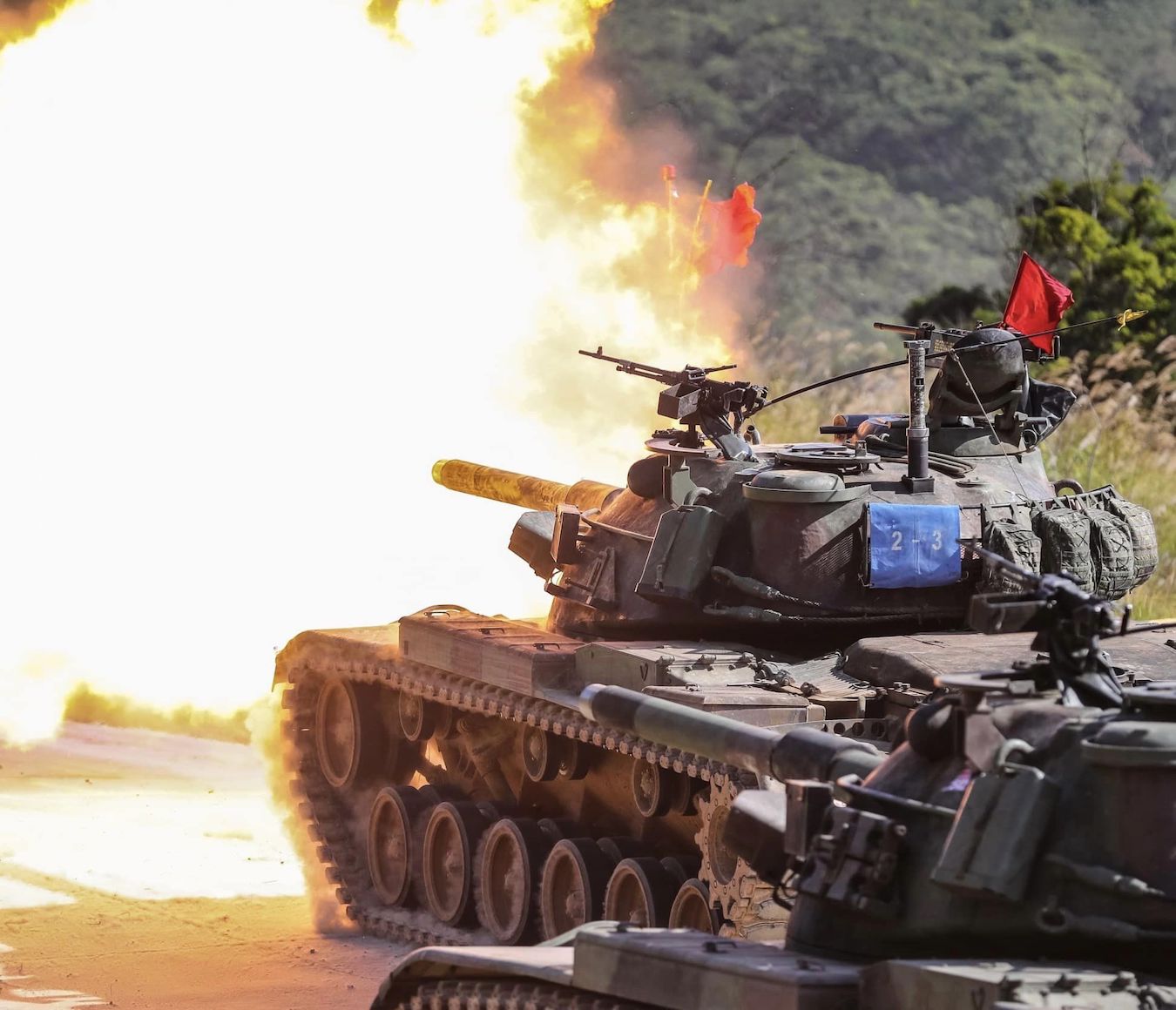by Brian Hioe
語言:
English
Photo Credit: 國防部發言人/Facebook
THE POSSIBILITY OF the US establishing an arms stockpile in Taiwan under the provisions of the 2023 National Defense Authorization Act has been increasingly discussed in Taiwan. In particular, proponents of such measures and opponents of such measures often divide between the pan-Blue and pan-Green camps.
When questioned by legislator Johnny Chiang, Minister of National Defense Chiu Kuo-cheng stated that the government was in talks with the US regarding this possibility but that no consensus had been reached. Chiu’s comments were later criticized by National Policy Foundation associate research fellow Chieh Chung for going on the record without prior agreement with the US–something that could potentially sink the possibility of a regional stockpile if Taiwan prematurely raised the issue. Taiwan prematurely publicizing unfinalized agreements has been blamed for delays in trade talks with the US in the past, as well. The National Policy Foundation is a think tank associated with the KMT.
 Photo credit: 國防部發言人/Facebook
Photo credit: 國防部發言人/Facebook
Some of the debate regarding arms stockpiles has been along the lines of concerns if this further pushes US away from strategic ambiguity. Arms stockpiles in Taiwan could be seen as more visibly demonstrating US commitment to Taiwan, in that through storing US arms in Taiwan that would be used in defense of Taiwan in the event of a hypothetical invasion, this could be interpreted by China as an explicit US commitment to defend Taiwan.
China has similarly played up other US actions intended to signal strengthened ties with Taiwan, such as increasing the number of US marines in Taiwan to 200 from 30. Certainly, it is not as though 170 extra troops, primarily used for security purposes, would stave off a full-scale Chinese invasion, but China uses such actions as a pretext to step up aggressive measures directed at Taiwan.
In this sense, the debate regarding arms stockpiles in Taiwan touches upon the debate between the advisability or inadvisability of the US continuing to maintain its current posture of strategic ambiguity or whether it should more explicitly shift to a posture of strategic clarity on what it would do in a Taiwan contingency. This is something debated not only in the US, but also in Taiwan, with arguments for both sides–though it is also questioned if any shift in longstanding US stances will occur with any consultation with Taiwan, as to what it finds most advisable for not giving China pretext to carry out aggressive actions.
Other suggestions have been that arms stockpiles could be located elsewhere, in places close to Taiwan where the US already has a military presence such as Okinawa. Some argue that this would be less provoking of China. Some argumentation, too, pertains to whether Taiwan has the sufficient capacity for storing US arms at present, or whether this would require the construction of infrastructure that Taiwan currently does not have.
Nevertheless, some pan-Blue discourse regarding the arms stockpiles has simply sought to sow distrust about the US, along the lines of previous discourse about US plans to sell Volcano landmines to Taiwan. It is claimed that arms stockpiles would endanger Taiwan, for example, or would simply be the US using Taiwan as a place to store munitions.
 Photo credit: 國防部發言人/Facebook
Photo credit: 國防部發言人/Facebook
Previously, pan-Blue claims about Volcano landmines aimed to depict the mine purchase as violating international human rights conventions and turning Taiwan as a whole into a landmine-ridden battlefield. This occurred despite defense issues stating that only anti-tank landmines would be purchased, not anti-personnel ones, which would be visible by the naked eye. Likewise, mines would only be used on beaches where Chinese military forces might conduct a landing, rather than be strewn haphazardly over Taiwan. Backlash against Volcano landmines led a number of KMT legislators to sponsor a resolution opposing the sale of Volcano landmines.
More broadly, the KMT has sought to sow doubt about the reliability of the US as an ally against a Chinese invasion. This would be a means of trying to take the DPP down a peg, at a time of increasingly visible diplomatic ties between Taiwan and the US, but also along the lines of the KMT’s traditional claim that it is the only political party in Taiwan able to maintain stable cross-strait relations. As such, the KMT has sought to depict the DPP as warmongering and unnecessarily provoking China–including through efforts to pursue stronger political, economic, and military ties with the US.
One expects this to occur regarding discussions about proposed arms stockpiles, as well, something that occurs at the same time as there has also been calls for the US to speed up its delivery of arms to Taiwan. Yet this, too, has been framed by the pan-Blue camp as the US seeking to foist unwanted arms that it does not want onto Taiwan.

